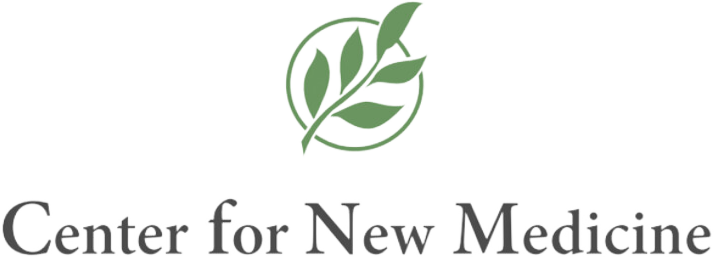At the Center for New Medicine in Irvine, CA, one of the most common frustrations we hear from patients is the issue of slow injury recovery. Whether it’s a nagging back injury, a sprained ankle that never fully healed, or lingering pain after surgery, the process can feel painfully drawn out.
But why does this happen? Why do some injuries heal quickly while others seem to plateau—or even worsen—with time? In this article, we’ll explore what causes slow injury recovery, why conventional approaches often fall short, and how innovative therapies such as Cell Sonic can help reactivate your body’s natural healing response.
What Is Slow Injury Recovery?
Slow injury recovery refers to the delayed or incomplete healing of tissue after an injury—whether that’s bone, muscle, ligament, or nerve. Instead of moving steadily through the body’s natural healing phases (inflammation, regeneration, and remodeling), the process stalls or regresses. This can leave people dealing with persistent pain, stiffness, weakness, or limited range of motion months or even years later.
In many cases, what starts as a minor issue becomes a chronic condition simply because the body never gets the signal to finish the healing process. That’s when slow injury recovery becomes more than just a nuisance—it begins to affect your quality of life.
Common Causes of Slow Injury Recovery
There are many factors that can contribute to slow injury recovery, including the following:
1. Poor Circulation
Tissue repair depends on healthy blood flow. When an area lacks proper circulation—either due to age, diabetes, or vascular issues—oxygen and nutrients can’t get where they need to go. Waste products build up. Healing stalls.
2. Chronic Inflammation
Inflammation is a normal part of healing, but when it persists too long, it starts to break down tissue instead of repair it. Many patients in slow injury recovery are stuck in a state of low-grade, unresolved inflammation.
3. Nerve Damage
Sometimes an injury disrupts communication between the brain and the damaged area. Without proper nerve signaling, muscles may not activate correctly, and the body doesn’t “recognize” the need to heal.
4. Underlying Conditions
Autoimmune issues, hormonal imbalances, mold toxicity, or chronic infections can all impair tissue repair and lead to slow injury recovery.
5. Scar Tissue & Fibrosis
After an injury, scar tissue often forms. While some of it is necessary, too much fibrosis can restrict movement and blood flow, leading to a stiff, painful area that’s prone to re-injury.
Why Conventional Therapies Aren’t Always Enough
Traditional injury treatments—such as rest, ice, pain medications, or physical therapy—may help in the short term. But for many people with slow injury recovery, those treatments don’t get to the root of the problem.
Masking pain with medication doesn’t restore cellular energy. Rest alone doesn’t break up scar tissue or reestablish nerve communication. And passive treatments may not be enough to kickstart a stalled healing process.
This is where more advanced bioenergetic therapies come in—specifically, Cell Sonic SEP Therapy.
How Cell Sonic Can Speed Up Slow Injury Recovery
Cell Sonic is a non-invasive therapy that delivers focused acoustic shockwaves and electromagnetic pulses into injured tissue. It’s designed to restore proper cellular function and stimulate healing from the inside out.
Unlike other technologies that rely on heat or chemical stimulation, Cell Sonic works at the cellular level, mimicking the body’s natural electric fields. This reawakens “dormant” or damaged cells, increases blood flow, improves nerve signaling, and reduces inflammation.
Here’s how Cell Sonic addresses slow injury recovery:
- Stimulates angiogenesis (the formation of new blood vessels) to improve oxygen and nutrient delivery
- Reduces fibrosis and helps break up scar tissue
- Restores electrical communication in nerves and muscles
- Activates dormant stem cells to support tissue regeneration
- Improves mitochondrial function, boosting cellular energy and repair
If you’ve been stuck in slow injury recovery, Cell Sonic may be the missing link to finally move forward.
Learn more about this therapy here: cfnmedicine.com/services/cell-sonic-sep-therapy
Conditions That Often Involve Slow Injury Recovery
We commonly see slow injury recovery in patients with the following conditions:
- Rotator cuff injuries
- Tennis or golfer’s elbow
- Post-surgical healing delays
- Tendonitis or bursitis
- Sciatica and back pain
- Neck strain or whiplash
- Neuropathy or nerve pain
- Sports injuries
- Plantar fasciitis
- Joint instability
Even old injuries that you thought you had to “live with” can respond well to Cell Sonic once the right healing signals are restored.
Whole-Body Healing for Better Results
At the Center for New Medicine, we don’t just treat your symptoms—we treat you. If you’re dealing with slow injury recovery, we’ll assess your overall health, immune function, toxicity levels, and inflammation markers to uncover any hidden blocks to healing.
We may pair Cell Sonic Therapy with the following strategies:
- IV therapy
- Detoxification protocols
- Oxygenation treatments
- Nutritional and hormonal support
- Functional medicine testing and care plans
The goal? To create the perfect healing environment—both locally at the site of injury and systemically throughout your entire body.
You Don’t Have to Stay Stuck
If you’ve been asking yourself, “Why is this taking so long to heal?” or “Why does my pain keep coming back?”—you’re not alone. Slow injury recovery is incredibly common, but it doesn’t have to be your permanent reality.
You deserve a treatment that works with your body, not against it—something that reactivates your cells’ natural ability to heal and regenerate.
Cell Sonic Therapy at the Center for New Medicine may be the breakthrough you’ve been looking for. Learn more about it today!
